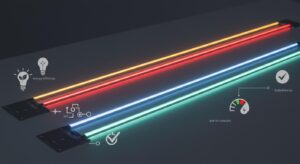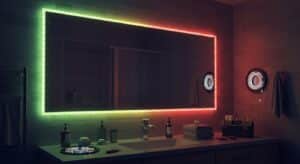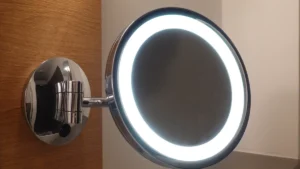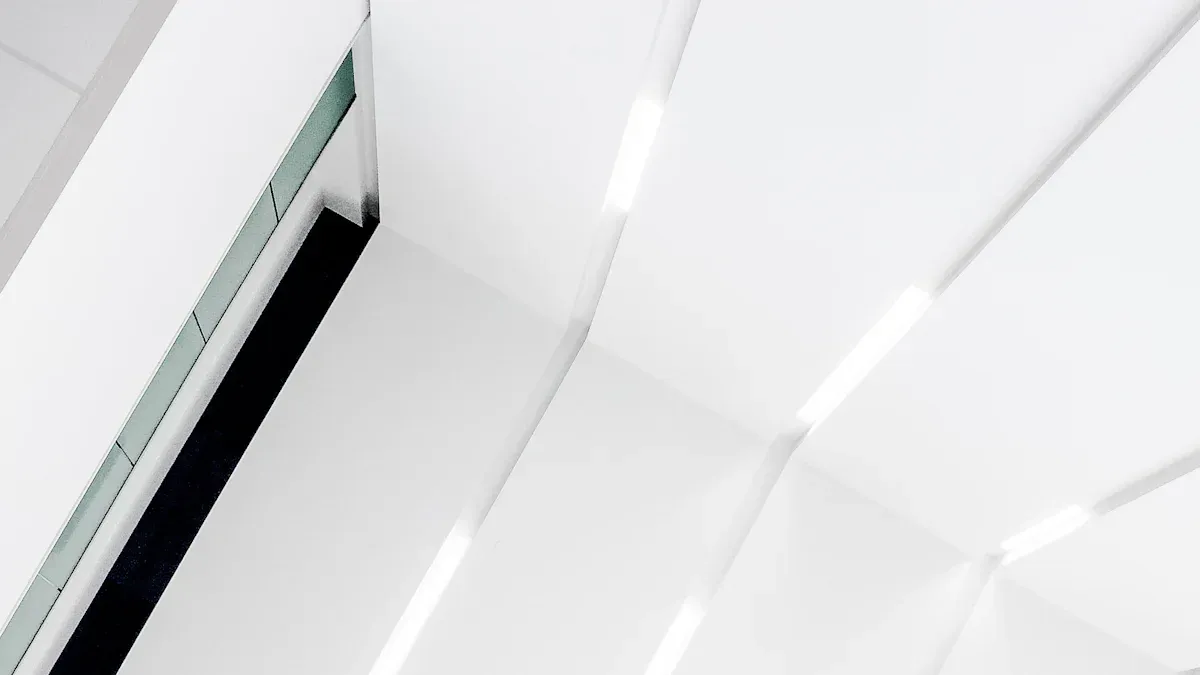
Following European LED strip light standards is important. These standards help manufacturers sell in the European Union. They ensure products are safe and eco-friendly. The standards also align with European laws. By adhering to them, companies can satisfy customers and avoid legal trouble. Regulations regarding harmful materials and energy conservation are key to these standards. Complying with the standards keeps users safe and enhances a company’s image. It also aids them in competing more effectively in the market.
Key Takeaways
Knowing European rules is important for LED light makers. It keeps products safe and eco-friendly, letting them sell in Europe.
CE Marking is needed to sell LED lights in Europe. It shows the products follow health, safety, and environment rules.
The RoHS Directive cuts harmful materials in products. This keeps people and nature safe and improves the brand’s image.
EN Standards make sure products are safe and high-quality. Following these rules earns customer trust and helps brands stand out.
A Declaration of Conformity is very important. This paper proves the products follow EU rules and helps them enter the market.
Key European LED Strip Light Standards and Certifications
CE Marking
CE Marking is needed to sell LED strip lights in Europe. It shows the product meets health, safety, and environmental rules. Manufacturers must follow directives like the Low Voltage Directive and Electromagnetic Compatibility Directive.
To get CE certification, products must pass strict safety and energy tests. The CE mark must be clear on the product, with details like the maker’s name and address. Manufacturers also need to prepare technical papers, including a Declaration of Conformity, for inspection if asked.
RoHS Directive
The RoHS Directive limits harmful materials in electronic items like LED lights. It protects people and nature by reducing substances like lead and mercury. This rule has improved health for workers by cutting exposure to dangerous chemicals.
Even with early worries about reliability, many RoHS-compliant products work well. Manufacturers must test materials and get certificates to meet these rules.
EN Standards
EN Standards ensure LED lights are safe and high-quality. They cover areas like light safety (EN62471), electrical safety, and performance. Following EN standards helps products meet European rules and customer needs.
Testing for EN standards is key for compliance. For example, EN62471 ensures LED lights don’t harm people with too much light exposure. Meeting these standards makes products more reliable and boosts market success.
Ecodesign and Single Lighting Regulation (SLR)
The Ecodesign and SLR rules shape LED lighting in Europe. These rules aim to save energy and protect the environment. They also push for better, sustainable designs. The SLR requires stopping the use of inefficient lights like CFLi and T8 lamps. These must be replaced with energy-saving options.
The SLR supports the circular economy idea. It demands that light parts be easy to replace. This helps reduce waste and improve product designs. Makers must give clear details about replaceable parts. This helps buyers make smart and eco-friendly choices.
The table below shows the main points of the SLR:
Evidence Type | Description |
|---|---|
Regulatory Changes | Stops use of inefficient lights like CFLi and T8 lamps. |
Circular Economy Elements | Needs replaceable parts to cut waste and improve designs. |
Information Requirements | Makers must explain replaceable parts to help buyers. |
Following the SLR helps companies meet EU rules and global green goals. It also improves their market position and meets customer needs.
Photobiological Safety (EN62471)
Photobiological safety is vital for LED strip lights. EN62471 checks risks from light exposure to keep users safe. Makers must follow these rules to protect people and meet EU standards.
EN62471 divides LED lights into four risk levels. This helps makers design safer products without losing quality. The rule also needs strict testing to keep light output safe. By following these rules, makers protect users from harm caused by too much light.
Meeting EN62471 is very important. It keeps users safe and builds trust in the market. Following these rules shows quality and supports EU LED light goals.
Steps to Achieve Compliance
Finding the Right Rules and Standards
LED strip light makers must know the rules they need to follow. These include the RoHS Directive, which limits harmful materials, and the Low Voltage Directive, which ensures electrical safety. The EMC Directive is also important as it controls electromagnetic interference. Following these rules helps meet European Union laws.
Some standards give clear instructions to manufacturers. For example, EN IEC 55015 explains how to measure radio interference in lights. EN 55103-1 and EN 55103-2 focus on electromagnetic compatibility for professional lighting. Makers must also create key documents like a Declaration of Conformity, technical files, and test results to prove they meet these rules.
Testing and Getting Certified
Testing and certification are crucial for meeting the rules. Products must pass strict tests to ensure safety and save energy. For instance, the RoHS Directive checks for banned materials, while the Low Voltage Directive tests electrical safety. CE marking proves the product meets European safety and environmental rules, allowing it to be sold in Europe.
Different certifications cover specific needs. LM80 checks how long LED chips last, and EN62471 ensures light safety for users. Global certifications like CB and IECEE help with selling worldwide. Testing includes factory checks, product reviews, and certificates, which may need updates over time.
Certification Type | What It Covers |
|---|---|
ERP Certification | Focuses on saving energy and protecting the environment. |
LM80 Certification | Tests how well LED chips perform over time. |
EN62471 Certification | Makes sure lights are safe for people’s eyes and skin. |
UL Certification | Shows the product is safe for North America. |
Waterproof Test Report | Proves the product works in wet or outdoor conditions. |
Keeping Records and Adding Labels
Good records and labels are needed to follow the rules. Makers must keep technical files, user guides, test results, and a Declaration of Conformity. These papers prove the product meets European LED strip light rules.
Labels must show the CE mark clearly on the product. Other details, like the maker’s name, address, and product features, should also be included. Clear labels help buyers understand the product. By doing this, makers show they care about safety and following the rules.
Writing a Declaration of Conformity
A Declaration of Conformity is a formal promise by makers. It confirms their products follow European safety and legal rules. For LED strip light makers, this document is very important. It proves they meet European standards and can sell in the market.
To write this document, makers must know the right rules. These include the Low Voltage Directive, Electromagnetic Compatibility Directive, and RoHS Directive. Each rule has specific needs about safety, interference, and harmful materials. Makers must check their products meet these rules first.
The document needs key details. It should list the product’s model number and description. The maker’s name, address, and contact details must be clear. It should also mention the rules and standards followed, like EN62471 for light safety. An authorised person must sign it to make it valid.
Makers must keep correct records of this document with technical files. These records should be ready if authorities ask for them. Good records show compliance and build customer trust. They prove the maker cares about safety and quality.
By creating a complete Declaration of Conformity, makers can sell confidently in Europe. This shows they follow safety rules and respect European laws. It also improves their image in the LED lighting business.
Challenges in Meeting Compliance
Common Problems for Manufacturers
LED light makers face many problems meeting European rules. One big issue is understanding the many laws and guidelines. For example, the RoHS and Low Voltage rules have different needs. This can confuse companies new to European standards. Misunderstanding these rules can cause fines or product recalls.
Testing and certification are also tough. Many companies find it hard to meet strict safety and performance rules. Tests for light safety or electromagnetic issues need special tools and skills. Smaller companies often don’t have these resources. Failing tests can mean extra costs for retesting, which adds pressure.
Making correct documents and labels is another problem. Creating technical files and adding CE marks needs careful work. Mistakes here can delay sales or cause legal trouble. Also, keeping up with changing rules makes things harder. Companies must often update their processes to stay within the law.
Ways to Solve Compliance Problems
There are ways to solve these problems. First, training staff can help them understand the rules better. Workers who know about RoHS or EN standards can avoid mistakes and save time.
Working with approved testing labs is another good idea. These labs have the tools and knowledge to check safety and performance. Partnering with them helps products pass tests and reduces failures.
Keeping clear and organised records is also key. Companies should manage files, test results, and conformity papers well. Checking these records often can catch problems early and fix them.
Lastly, staying updated on rule changes is very important. Joining industry groups or reading newsletters can give useful updates. Being proactive helps companies adjust quickly and keep selling their products.
Benefits of Compliance for LED Strip Light Manufacturers
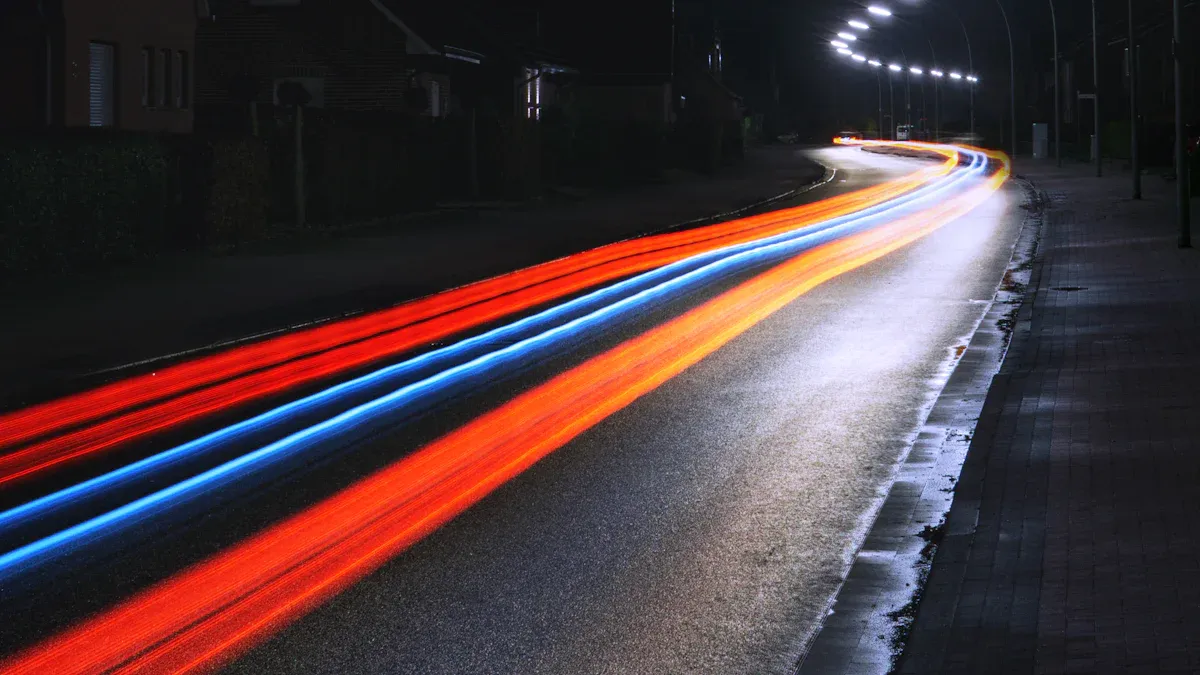
Market Access and Competitive Advantage
Following European rules helps companies enter profitable markets. Certifications like CE, RoHS, and UL show products are safe and eco-friendly. These allow makers to sell worldwide. For example, CE marking lets products into Europe, while UL certification helps in the U.S. These labels prove quality and meet customer needs.
Certification | Benefit | Market Access |
|---|---|---|
UL | Entry into U.S. market | Millions of buyers |
CE | Entry into European market | Follows EU rules |
RoHS | Ensures product safety | Meets green standards |
Being compliant gives companies an advantage. They can stand out from non-compliant products. This attracts eco-friendly buyers and businesses. It also improves their global market position.
Enhanced Safety and Environmental Sustainability
Meeting European rules ensures LED lights are safe and eco-friendly. Rules like the Ecodesign Directive save energy and lower pollution. RoHS rules reduce harmful materials, protecting people and nature.
Following rules ensures safety and energy-saving designs.
The Ecodesign Directive promotes energy-efficient lighting products.
Standard | Description |
|---|---|
CE Marking | Proves products meet EU safety and eco rules. |
RoHS Compliance | Cuts harmful materials, protecting users and the planet. |
By following these rules, companies help the environment. Their actions match global green goals and make LED lights a better choice.
Consumer Trust and Brand Reputation
Compliance builds customer trust. Certifications like CE and RoHS show products are safe and eco-friendly. This trust leads to loyal customers and good reviews.
A compliant product shows the company cares about quality and safety. It proves they value customer health and the planet. Over time, this boosts their brand image, bringing in more buyers and long-term success.
Tip: Following rules not only avoids legal issues but also wins over eco-conscious customers.
Following European LED strip light rules keeps people safe. It also saves energy and helps the environment. The table below shows why these rules matter:
Aspect | Importance |
|---|---|
Safety | Makes sure products are safe to use. |
Energy Efficiency | Helps lower energy use and save money. |
Environmental Sustainability | Encourages eco-friendly actions and follows green laws. |
Companies that follow these rules succeed in the long run. They can sell in more places and improve their brand image. This also helps create a greener future, building trust and new ideas.
FAQ
What is the CE marking, and why does it matter for LED strip light makers?
The CE mark shows products meet European safety and eco rules. It lets makers sell in the European Economic Area. It also proves the product is safe and follows the law.
How can makers ensure their LED strip lights follow RoHS rules?
Makers must check materials for banned items like lead or mercury. Working with approved labs ensures correct testing. Keeping records of certificates shows they follow RoHS rules.
What are EN standards, and how do they help LED strip light makers?
EN standards set safety and quality levels for LED lights. Following them makes products reliable and accepted in the market. It also builds customer trust and avoids legal problems.
Why is photobiological safety (EN62471) important for LED strip lights?
EN62471 checks risks from light to keep users safe. Makers must test products to rate risk levels and ensure safety. Following this rule builds trust and meets EU health goals.
What should a Declaration of Conformity include?
It must list the product model, maker’s details, and rules followed. An authorised person must sign it. This document proves the product meets EU rules and allows sales in Europe.
